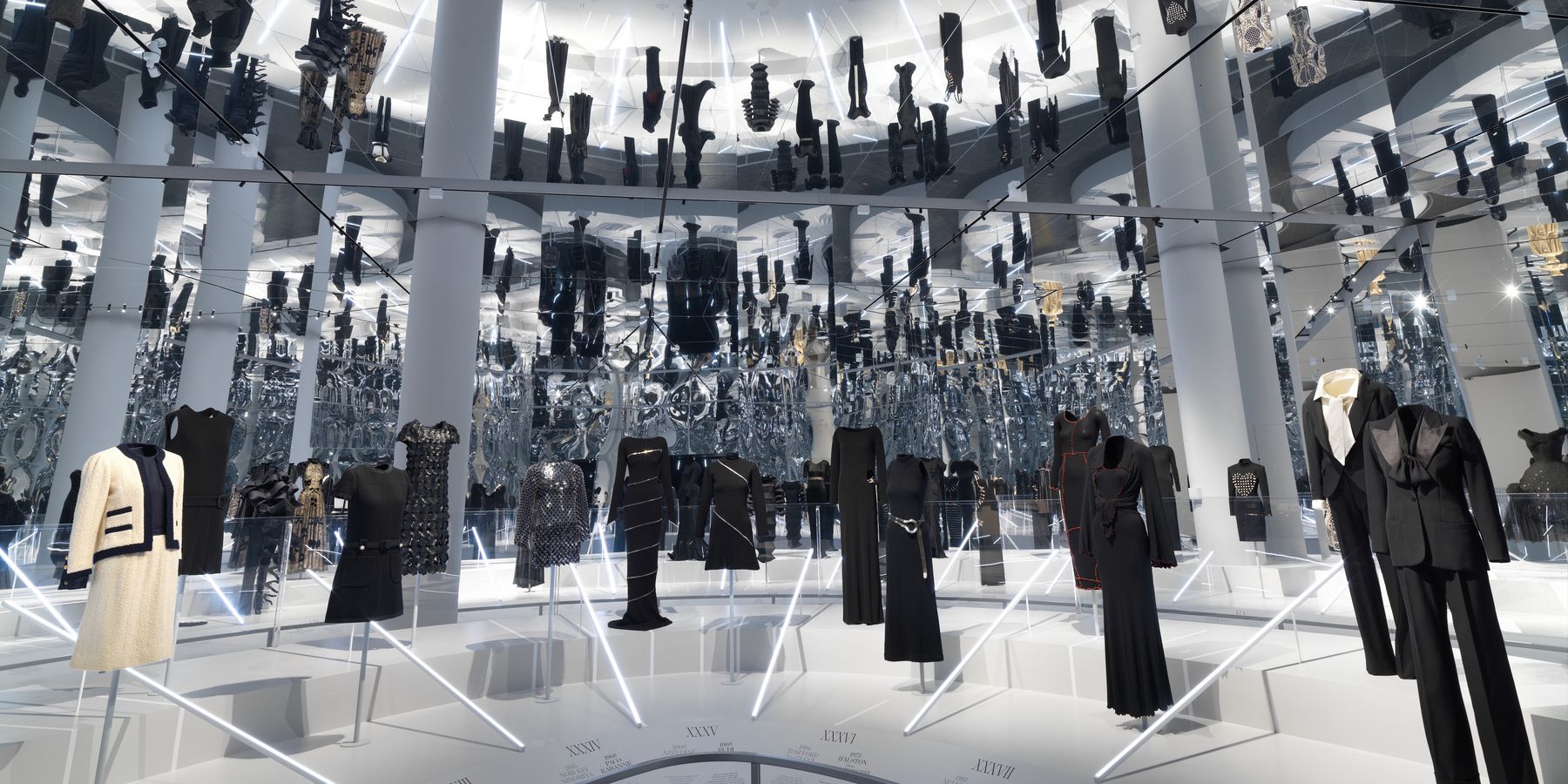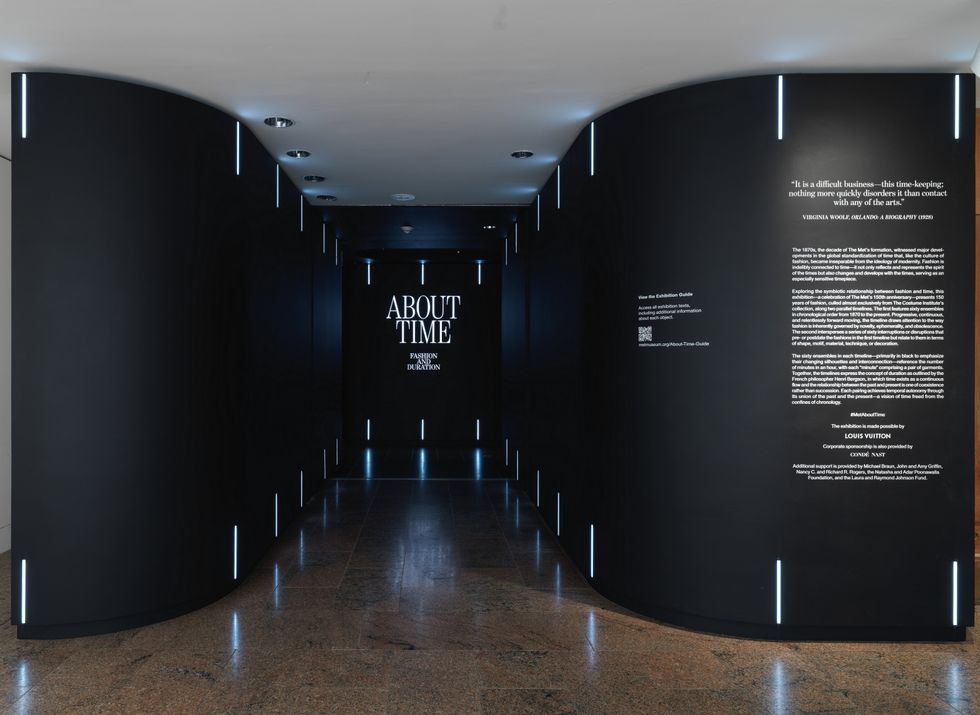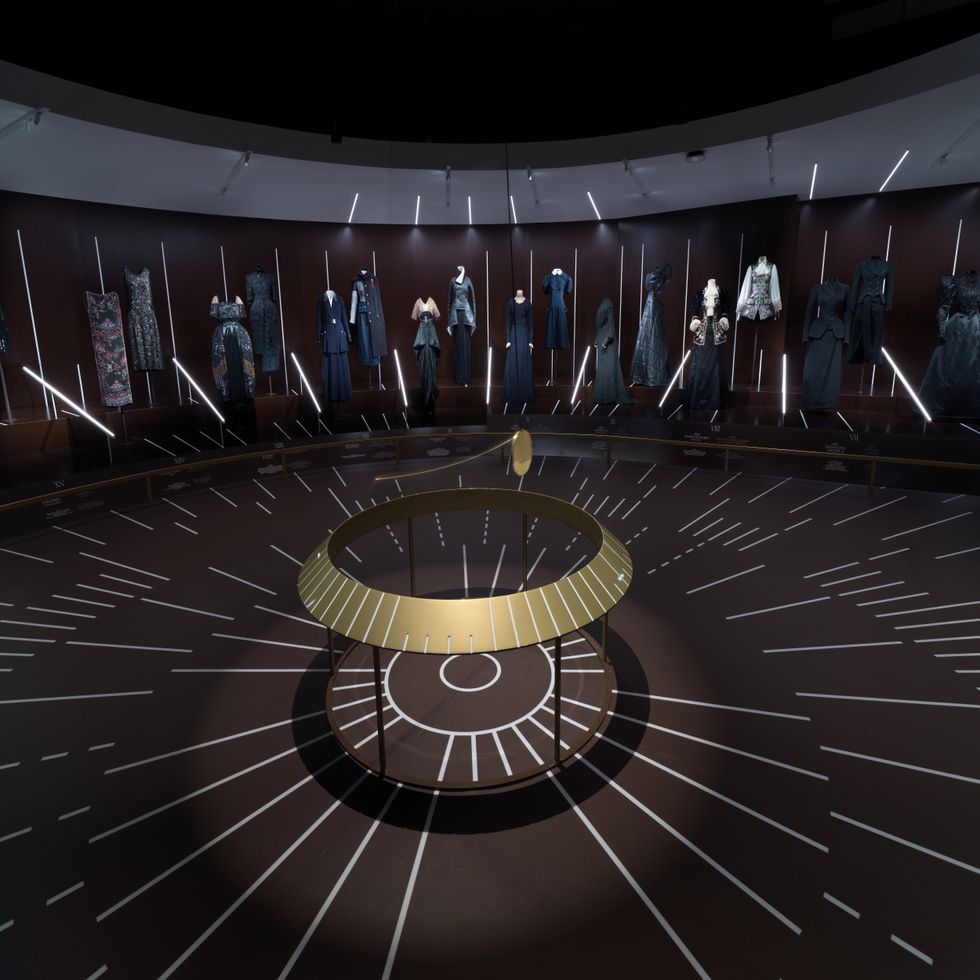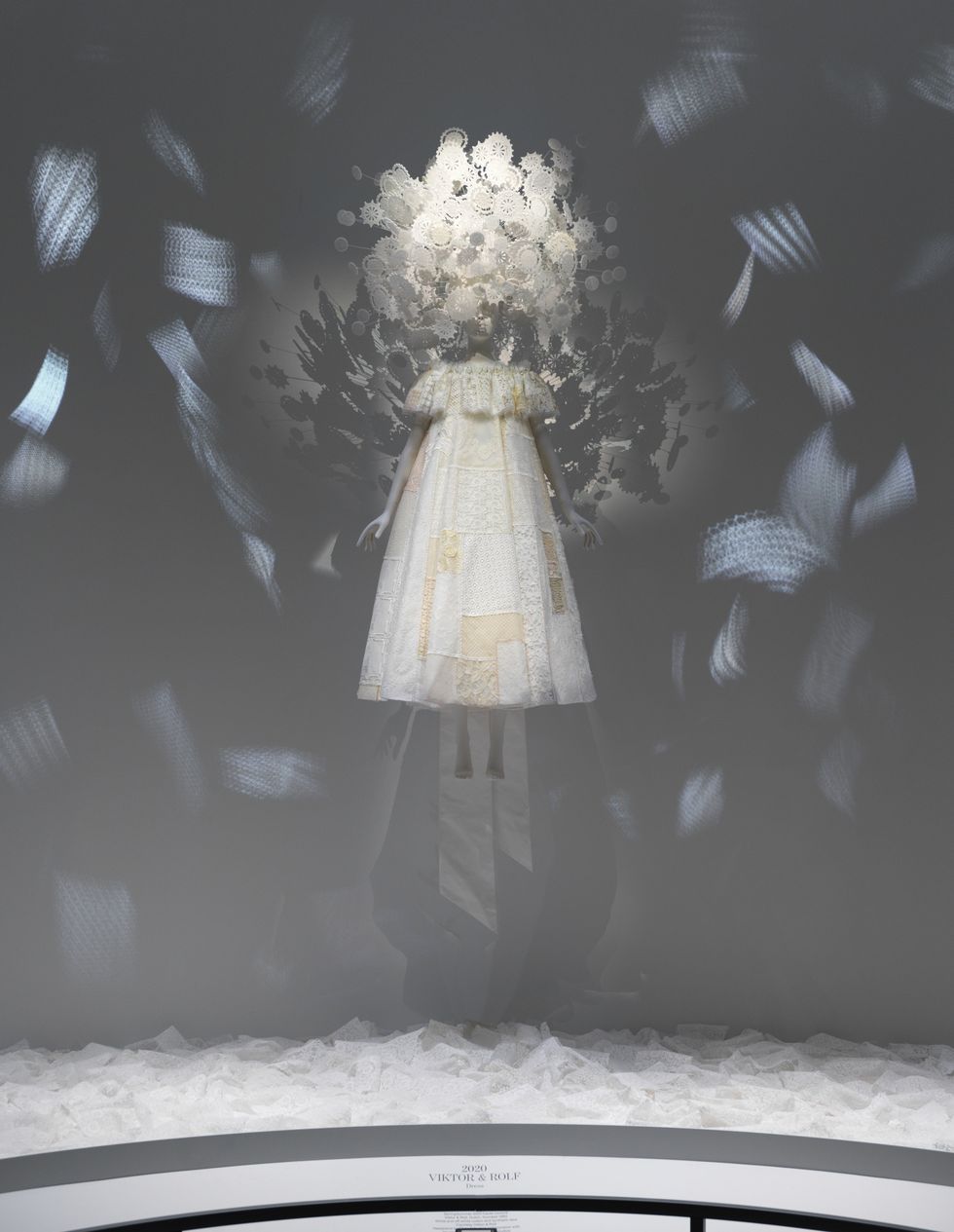
Although the pandemic may have put a stop to the 2020 Met Gala, the coinciding exhibition at The Metropolitan Museum of Art's Costume Institute is still going forward. Postponed from its original May 4 debut, "About Time: Fashion and Duration" will officially open this Thursday, October 29, almost half a year later.
"About Time: Fashion and Duration considers the ephemeral nature of fashion, employing flashbacks and fast-forwards to reveal how it can be both linear and cyclical," said Max Hollein, director of The Met, in a statement. "The result is a show that presents a nuanced continuum of fashion over the Museum's 150-year history."
As you take your initial steps inside the show's entryway, where a glowing sign reading "About Time: Fashion and Duration" lights a dark facade, the echoing words of Nicole Kidman reading from Orlando: A Biography (1928) by Virginia Woolf usher you into the first gallery, where a swinging pendulum dictates the exhibit's construction. Across from each "minute" on the enormous clock sits a pair of juxtaposed garments: a primary piece representing fashion's timelessness and a secondary work depicting a trend's resurgence.

At the first stop, an 1870s American "Mourning Dress" — a silhouette which typified the time period's style with a high-waisted bodice, floor-length skirt and a supporting bustle — stands next to Elsa Schiaparelli's 1939 "Evening Dress," which revived the 19th century bustle shape with a modern, narrow silhouette. As you make your way around the clock, French philosopher Henri Bergson's concept of la durée (duration) — one which inspired the exhibit and where the past co-exists with the present — becomes increasingly evident between the shapes, motifs, patterns and techniques within each pairing.
Soundtracked by "The Poets Acts" from The Hours (2002), composed by Phillip Glass, a black silk faille princess-line dress from the late 1870s inspires an Alexander McQueen "Bumster" skirt from 1995 in the next "minute," followed soon after by a mid-1890s black silk dress boasting dramatically enlarged sleeves, which stands the test of time next to a signature Comme des Garçons deconstructed work from 2004.
Continuing around the clock, Marc Jacobs revitalizes an early twentieth century lace-lined silk dress from France for Louis Vuitton in 2011, John Galliano riffs off of the American Red Cross' 1918 uniform with a deconstructed and reassembled dress for Maison Margiela this year and Virgil Abloh reinterprets Gabrielle Chanel's 1927 refined, two-piece black couture dress in a more literal sense with the phrase "little black dress" running down the side of his work in quotation marks.

Upon rounding the pendulum in its entirety, a dimly lit corridor leads to the second gallery, where the minute-by-minute display continues against a wall of morphed mirrors and "Morning Passages" from The Hours (2020), composed by Phillip Glass, sets the ambiance. In a similar fashion, linear and cyclical style evolutions decorate the room: Paco Rabanne's 1968 silver-plated micro-mini dress lends sartorial inspiration to Noir Kei Ninomiya's 2015 metal-studded, floral-like evening gown and Karl Lagerfeld looked to Gabrielle Chanel, of course, to honor her legacy of signature, textured wool suits as the lead designer at her namesake label in 1994.
All of the featured garments are intentionally black in order to emphasize the distinct changes in design. At the conclusion of the exhibit, however, a white dress sourced from Viktor & Rolf's Spring 2020 haute couture collection, constructed from upcycled swatches with a patchworking technique, symbolizes the future of fashion — where sustainability and collaboration must claim the spotlight. 150 years of fashion later, a sophisticated Julianne Moore reading from Orlando: A Biography (1928) by Virginia Woolf gracefully leads you through the exit.
"Fashion is indelibly connected to time," said Andrew Bolton, the Wendy Yu curator in charge of the Costume Institute. "It not only reflects and represents the spirit of the times, but it also changes and develops with the times, serving as an especially sensitive and accurate timepiece. Through a series of chronologies, the exhibition uses the concept of duration to analyze the temporal twists and turns of fashion history."

Book your visit to The Met and see the "About Time: Fashion and Duration" exhibit for yourself, here. As per government regulations, timed tickets will be required for entrance to the museum, so make sure to plan accordingly.
Photos courtesy of the Metropolitan Museum of Art
From Your Site Articles
- Heavenly Bodies Broke The Met's Box Office - PAPER ›
- The Met Gala Theme for 2020 Has Been Revealed - PAPER ›
- The Met Gala 2020 Has Been Canceled for the Rest of 2020 - PAPER ›
Related Articles Around the Web